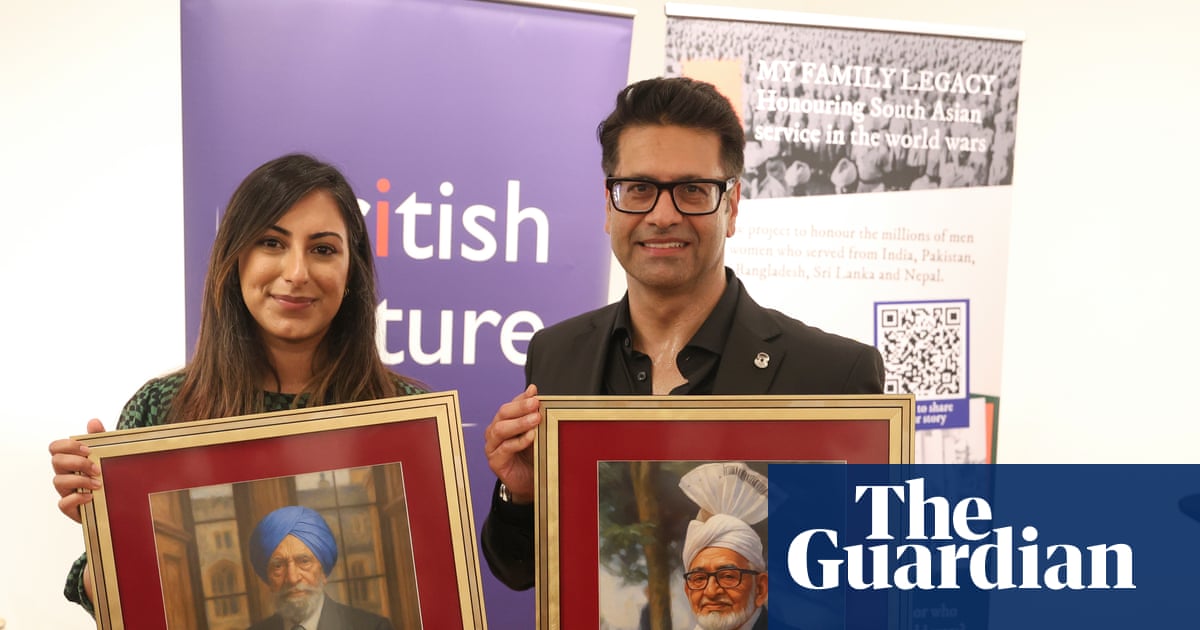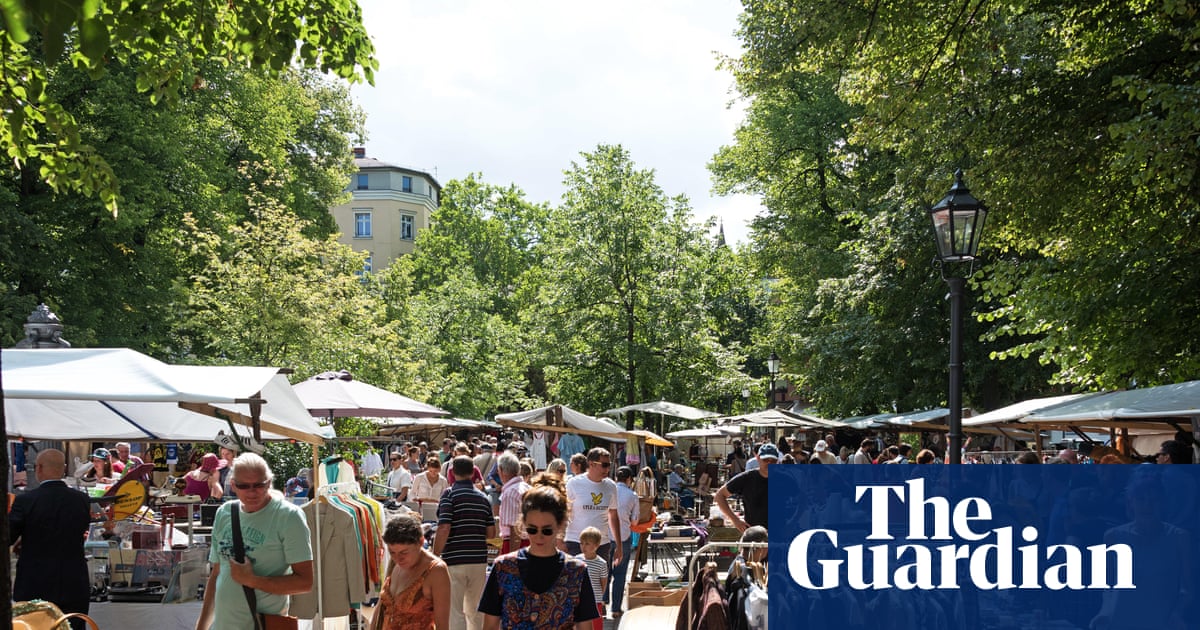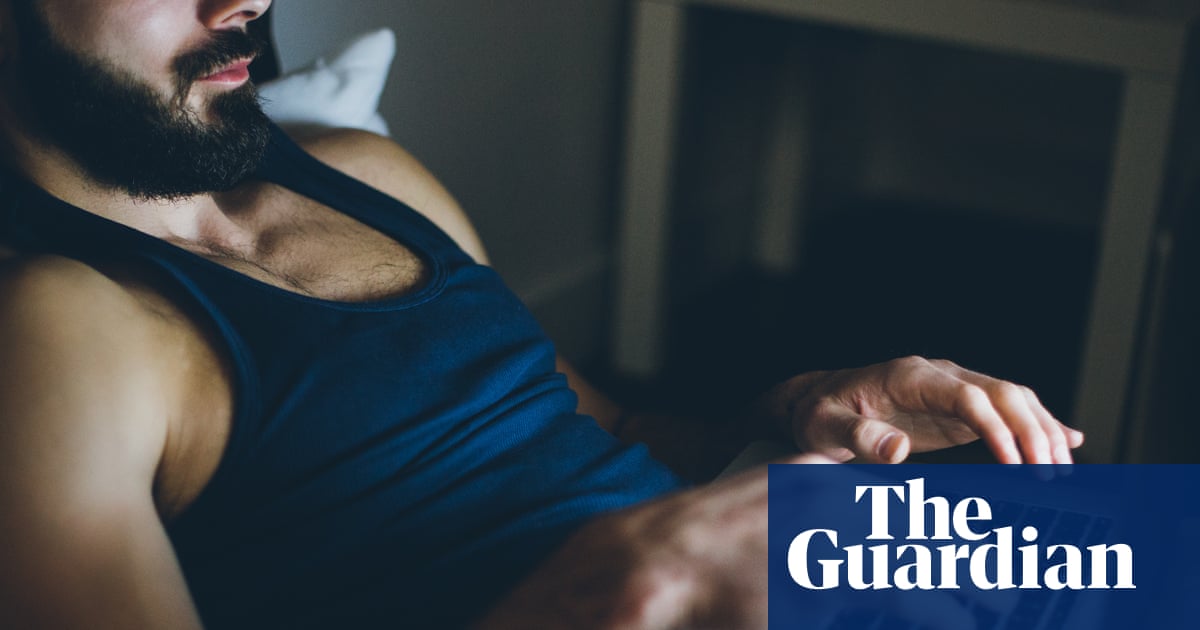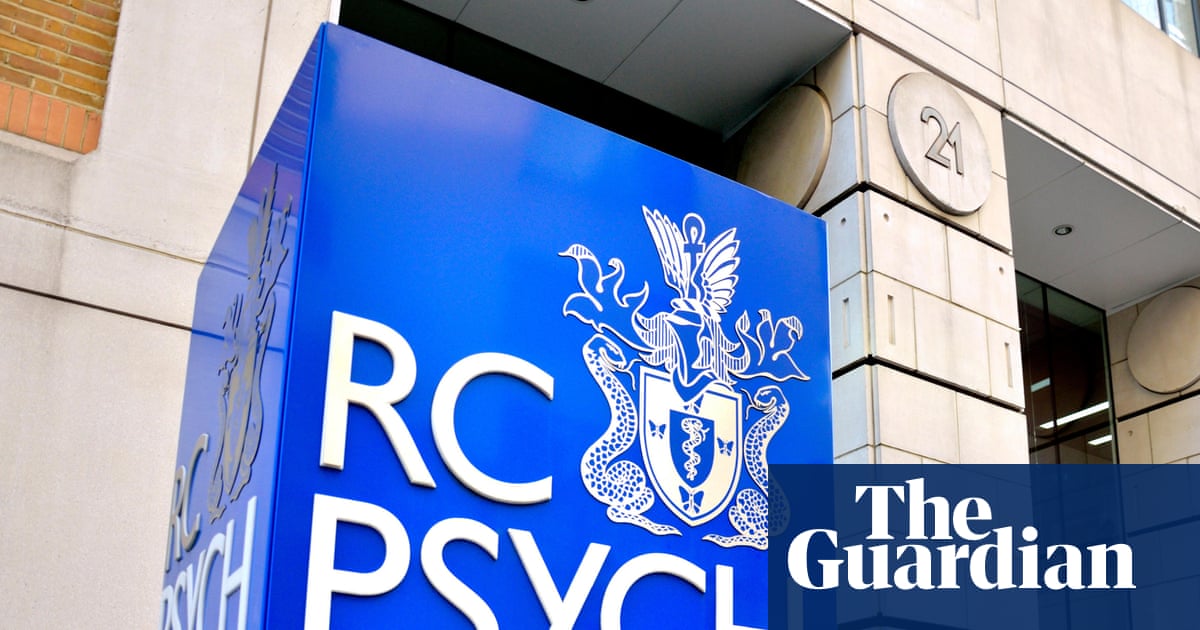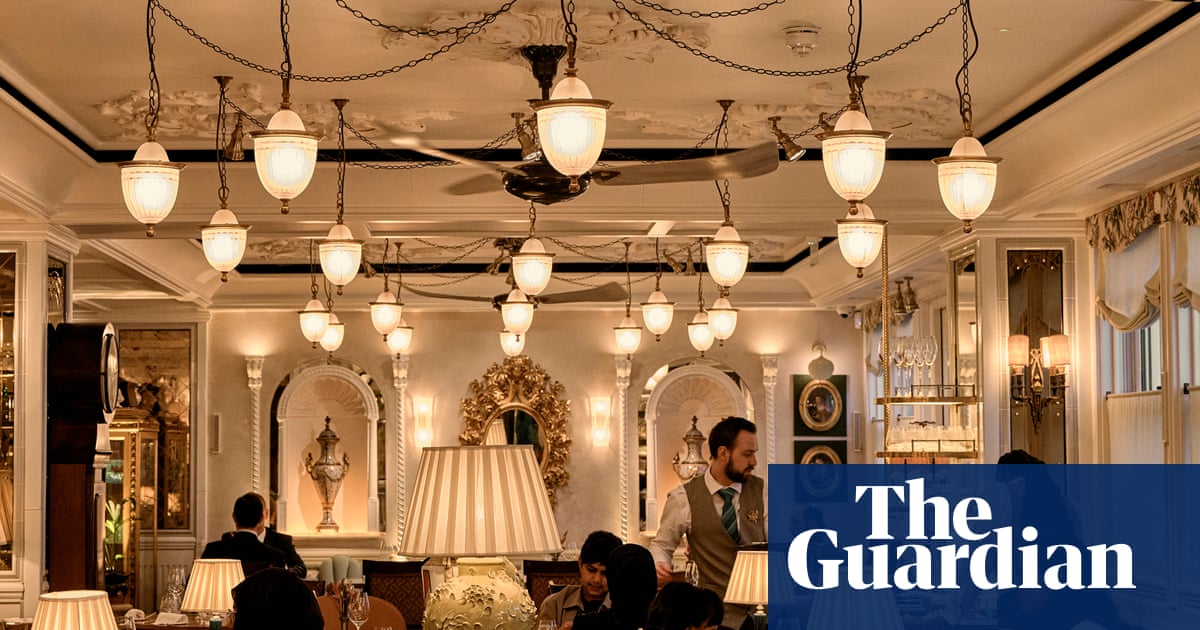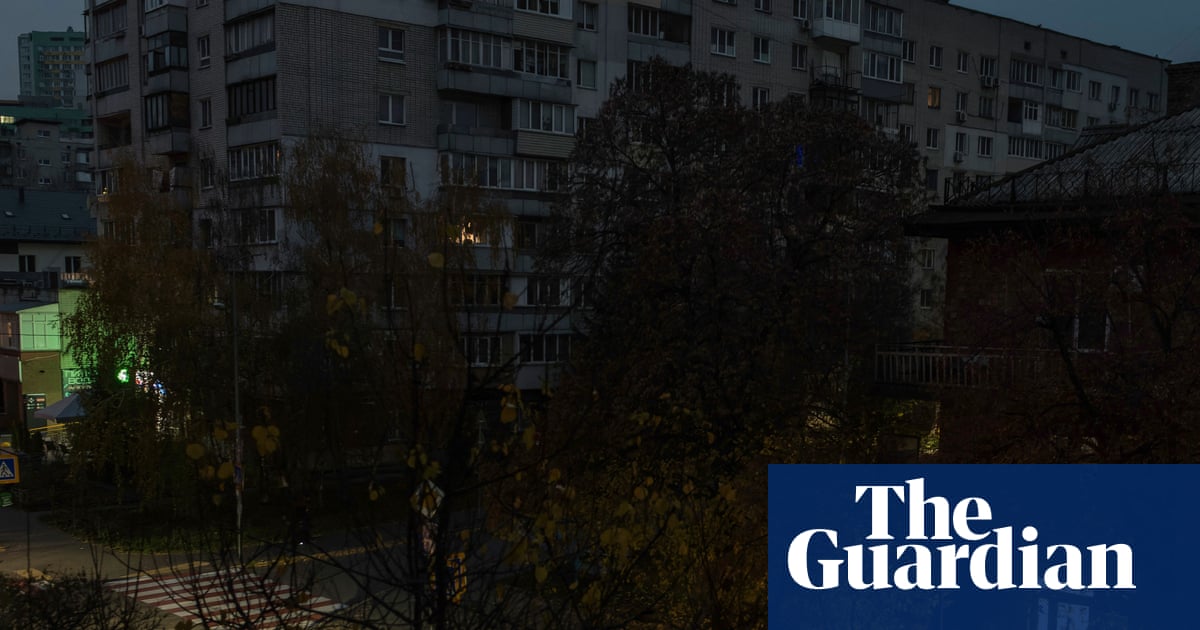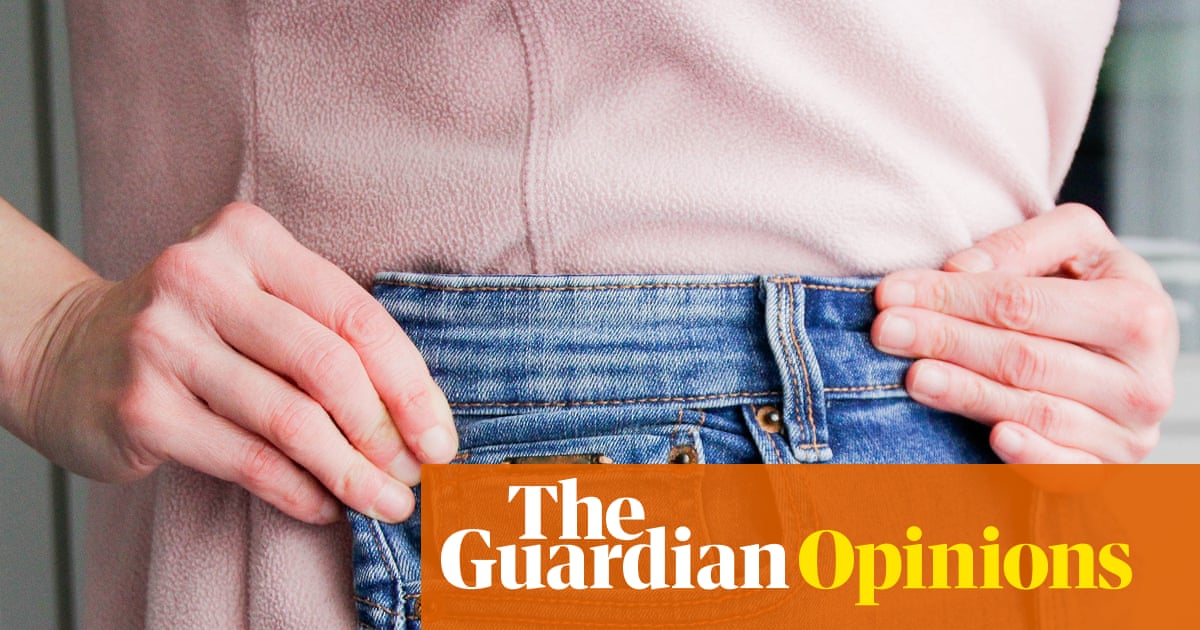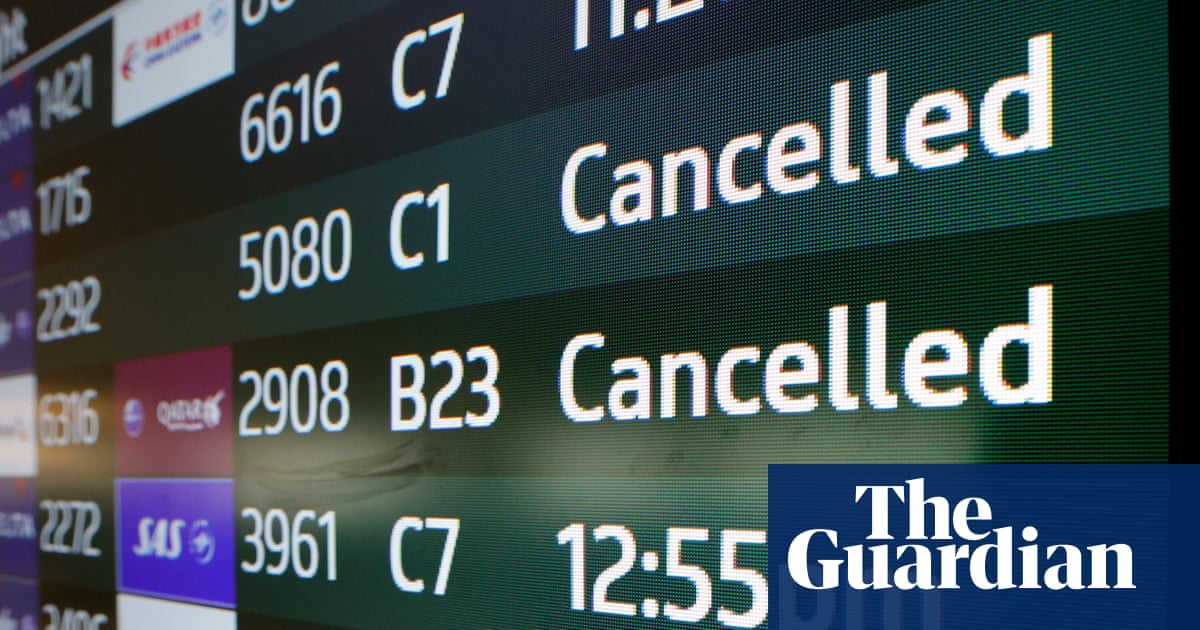‘You come with your parents, then later your girlfriend or boyfriend’
Iceland: swimming pool culture
There are said to be 160 pools in Iceland. With a population of just over 400,000, this means one for every 2,500 people. Just as well, as swimming is so ingrained in the national psyche. This is a fairly recent phenomenon: in 1940 swimming lessons became mandatory for schoolchildren in response to drownings that were the result of previous poor competency.
“We were brought up in the swimming pool,” says film-maker Jón Karl Helgason, who made the 2022 documentary Sundlaugasögur (Swimming Pool Stories). “They are everyone’s playground. You come with your parents, then later your girlfriend or boyfriend.”
Helgason swims almost every day in Reykjavík and pays 4,000 krona (£25) a year for unlimited access to his favourite public pool, one of 18 in the capital. The majority of pools are outdoors and geothermally heated, making it a more affordable pastime than in countries that have to heat the water, Helgason says.
As well as the obvious physical benefits of swimming, there are mental gains, too, through the sense of community that pools provide: “You meet lots of different people, from farmers to politicians,” Helgason says. Many pools have “hot pots” (hot tubs) – a nod to the country’s natural springs, which are also popular for a wilder dip – and cold plunges for cold-water therapy, along with saunas. “No phones are allowed.”
There is a campaign for Iceland’s pools to be given Unesco cultural heritage status. “You Britons go to the pub, but we go to the swimming pool,” Helgason says.
‘There’s nothing that’s not been put in a jar’
Ukraine: fermentation
While sauerkraut, gherkins and kefir may be familiar, even fashionable menu choices across Europe, fermented foods are a long-term staple in Ukraine. Felicity Spector, the London-based author of Bread and War, works with the nonprofit Bake for Ukraine, which runs a mobile bakery in Mykolaiv, making and delivering sourdough bread. Visiting regularly since the summer of 2022, Spector has been struck by the country’s commitment to preserving. “Most people, or certainly their parents, will have some kind of land to grow fruit and vegetables, and they are used to trying to preserve things for the winter months, when nothing grows. It happened during Soviet times, because people didn’t trust there would be anything in the shops, and now, during the invasion, people have been without power, or in areas under attack, so they couldn’t get to the shops.
“I learned from Ukrainian chef Olia Hercules about lacto-fermentation using salt and brine,” Spector says – an alternative to the vinegar used in pickling. “Vegetables are preserved by dry salting, then putting a weight on top, or covering them in brine, leaving in a dark place for 10 days or so, then sealing and keeping for up to a year.” Spector describes rows and rows of filled jars in basements, cupboards or even under beds.
While it isn’t always a consciously healthy eating choice, there are obvious benefits to this kind of diet, with naturally fermented products containing probiotics that can strengthen the gut microbiome, restore its natural balance and reduce inflammation. “There are lots of kinds of kefir and cheese made from fermented milk, which is good for your digestive system. There is ryazhenka – an amazing baked fermented milk product with a slightly caramel taste – and sourdough which is a traditional way of making bread. All these things have health benefits, but they’re not a new trend. It’s been going for hundreds of years.” Whereas in England, kefir is a health product and expensive, there “you can buy a huge jug of it … You often see it sold in an old Coca-Cola bottle on the edge of the market.”
Aside from the usual suspects, a lot of fruits are fermented, to bridge winter’s hungry gap. Spector has just acquired a container of juicy plums with a sour tang: “There’s really nothing that’s not been put in a jar.”
‘Smaller, more frequent meals keep energy levels and focus steady’
Switzerland: eating five times a day
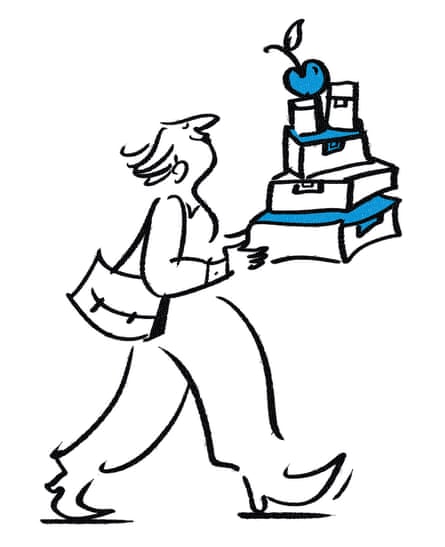
Rather than grazing throughout the day, the Swiss have traditionally scheduled five meals, as punctual as their trains. In German-speaking areas, these are zmorge (breakfast), znüni (mid-morning snack), zmittag (lunch), zvieri (afternoon snack) and znacht (dinner). The extra meals are observed in French-speaking areas, too, says Sandra Mikhail, a dietitian in Zurich: “Most Swiss people I work with average around four meals: breakfast, lunch, afternoon snack and dinner.”
The morning snack is often spelt bread-based, fruit or a gipfeli (croissant). The afternoon snack is heartier, maybe dips or bircher muesli. Lunch is the day’s biggest meal, “to align with our circadian rhythms and digestion – our metabolism and insulin sensitivity are generally stronger earlier,” Mikhail says. “A lighter dinner can improve sleep quality and reduce overnight digestive discomfort, and having smaller, more frequent meals can help keep energy levels and focus steady. It also aids digestion, as smaller meals are easier for the body to process, reducing the likelihood of discomfort and bloating. By regulating appetite and preventing overeating, frequent meals support better appetite control, can contribute to weight management and provide support for muscle maintenance and growth.
“That said,” Mikhail concedes, “it is important to recognise that every person has unique needs. It is about tuning into your own hunger and fullness cues rather than rigidly following a set number of meals.”
‘A firm walk and strong wind shift our mood’
The Netherlands: embracing the breeze
If you live in a very blustery place, there is nothing to be done but embrace the breeze. That is what the Dutch have been doing for centuries, says Arie Boomsma, who owns a gym chain in the Netherlands and is author of 10,000 Stappen Boek (10,000 Steps Book), which draws on the phenomenon of uitwaaien
– a term “the Dutch use when they go outside to clear their minds of everyday overwhelm,” Boomsma says. “It comes from waaien, ‘to be moved by the wind’, combined with uit, ‘going outward or letting something go’. In the 17th century it was used to describe smoke or dust being blown away. In the 19th and 20th centuries it took on its modern sense: going out to let the wind clear your head.”
It should not be confused with the other Dutch concept niksen (the art of doing nothing), Boomsma adds. “Niksen is a passive way of relaxing. Uitwaaien is active. You have to move. A firm walk and a strong wind can really change our mood and shift our perspective.”
‘Eating together shows a desire to reconnect’
Denmark: communal dining
Danes are revisiting the tradition of fællesspisning, or eating communally, according to Judith Kyst. As director of Madkulturen (food culture), an organisation within the ministry of food and agriculture that monitors the nation’s dietary habits, Kyst knows a thing or two about how Denmark dines. There is a long history of social dining, she says, which has its roots in the folkekøkken (soup kitchen) tradition dating back to the 19th-century labour movement, when affordable meals would be provided for workers. It involves healthy fare, often cooked by a community together and eaten at long tables by people who don’t necessarily know each other, in venues from village halls to daycare centres. Renewed enthusiasm for this demonstrates a need to “be together around the meal”, Kyst says. “It is a counter-reaction to individualism, loneliness and screentime” and shows a “desire to reconnect with the community”.
So what can you expect to eat? “To keep it cheap you often get chickpea curries and lots of greens,” Kyst says. This affordability makes it accessible and innately healthy. “When you have families at these meals, the children eat more fruit and vegetables. People say if they eat together, they eat healthier.” It connects with another Danish concept, madglæde, or taking joy in food.
‘Rest is embraced’
Spain: the siesta
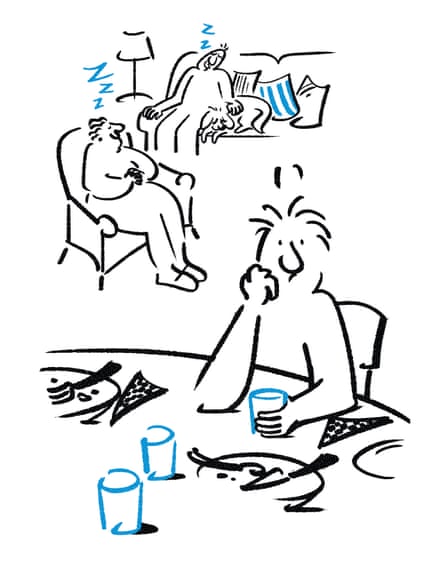
When digital distractions seem to be robbing us of rest, a different attitude to sleep is enticing. Look no further than the traditional Spanish siesta or post-lunch nap.
“Naps can be good for sleep health, if done right,” says Madrid-based Polly Revaliente, co-founder of The Sleep Project. “Short early-afternoon naps (20-30 minutes) can improve alertness, memory and mood.” But timing is key: “Naps that are too long or too late in the day can interfere with night-time sleep. Those prone to insomnia should avoid naps or keep them short and consistent.”
after newsletter promotion
Does the whole country still stop for a snooze? “The siesta is part of our cultural reputation, but it’s not part of most people’s working day any more,” Revaliente says. In summer, workers finish early due to the heat, but for most of the year Spanish working hours start early and run late. “With late-night dinners and evening news broadcasts at 10pm or beyond, Spaniards tend to go to bed later than Britons, yet rise at similar times, which can lead to sleep debt,” Revaliente says.
Still, the idea of relaxation is entrenched. “Rest is embraced, especially at weekends, on holidays and by the older generation. What Spain arguably preserves best is the idea that rest is not lazy, it’s part of life.”
‘Growing up in West Berlin in the 60s, the main warm meal was always at midday’
Germany: light food in the evening
Traditional German fare of potatoes and meat might not sound like the easiest for the digestive system to process, but Abendbrot (evening bread) is intended to be lighter than the more substantial meal served at lunchtime, aiding digestion and sleep.
“I grew up in West Berlin in the 60s. The main warm meal was always at midday,” says Ursula Heinzelmann, author of Beyond Bratwurst: A History of Food in Germany. “Normally, dinner would be sliced bread with cheese, ham, sausage. In our family there was always something fresh: cucumber, tomatoes or radishes – whatever was in season.” The type of bread was quite particular, too. “Here in Berlin it would be rye sourdough or Graubrot, a mixture of wheat and rye. White bread was something very exceptional for Sundays.”
After Sunday lunch, Heinzelmann’s family would go out for a long walk in a forest and exercise on the Trimm-dich-pfad (trim-yourself path), so called after the 1970s “Trim yourself” healthy living campaign. “You’d follow from sign to sign and you had exercises to do to get in good shape. I haven’t seen one recently but I have been told those things are coming back.”
Heinzelmann confirms Abendbrot is still common, though it sometimes moves to lunchtime. “Things are changing. In households where both parents work, you might move the warm meal to evening.” And there is now as much of a focus on the fresh elements as the bread: “There is a lot of consciousness, especially among the younger generation, about what kind of ingredients are good and what aren’t,” Heinzelmann says.
Would you have evening bread at a friend’s house or a restaurant? “Not me! It is very much a home thing.”
‘It was once on the edge; now it’s mainstream’
France: sophrology
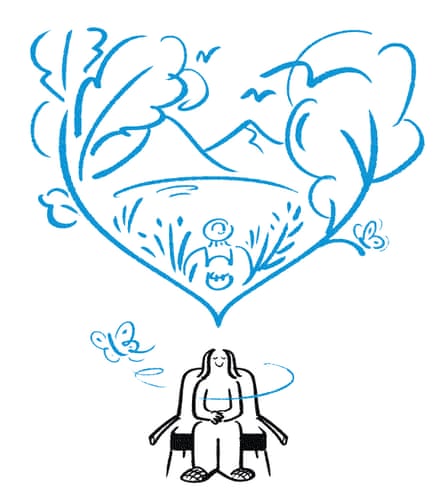
You’ve heard of yoga, meditation and mindfulness to help ease stress; in France, they swear by la sophrologie (sophrology). Julia Bache, a British GP who has lived in Paris for 30 years, became aware of the phenomenon when she started working in French clinics. It involves “physical and mental exercises such as controlled breathing, muscle relaxation, gentle movements, visualisation, meditation and mindfulness to harmonise the body and mind”, she explains, and is used for everything from stress and sleep to pain management and tinnitus. Whereas sophrology was once considered “a bit on the edge, now it is more the accepted mainstream”, Bache says; it is increasingly taught in schools and covered by health insurance.
Sophrologist Sophie McGrath grew up in Paris but now lives in London. She discovered the relaxation method as an anxious teenager through her grandmother who went to group sessions in a village hall. “It changed my life,” she says. “It took a while before I practised on a daily basis and got really into it, and then I decided to study it, and voilà, here we are.”
In France, McGrath says, “it is quite normal to see a sophrologist … it is a lot more present than in the UK”. It was devised in the 60s by Colombian neuropsychiatrist Alfonso Caycedo, who worked in France, Spain and Switzerland. “It was simply never translated into English,” says McGrath, who works at BeSophro, a UK practice where she carries out guided one-to-one sessions with clients, preparing them for birth, big job interviews or exams through “working on the somatic part of the nervous system” which controls voluntary actions. She treats a lot of French expats but says the word is spreading. “It really can speak to everyone.”
‘We’ve just sat down for a long meal, now it’s time to get out and move’
Italy: a postprandial stroll
The Italian ritual of la passeggiata – a postprandial walk – was once about seeing and being seen in the neighbourhood in the early evening. It’s also a great way to aid the digestion of a generous portion of pasta.
“The idea is: we’ve just sat down for a long meal with friends or family, now it’s time to get out, move and get some air,” says Dr Federica Amati, who spent her early years in Rome but lives in the UK where she is head nutritionist for Zoe, the personalised nutrition app, and nutrition lead at Imperial College London. It is still a social norm in Italy, especially in the summer, Amati says: “Stores close between 1pm and 4pm, then reopen, to accommodate this habit.”
Aside from being a chance to socialise, which boosts mental health, it has benefits for digestion, “because gravity is our friend when it comes to our guts trying to move food through our bodies”. Using the legs helps the lymphatic system to distribute nutrients, and there is a metabolic benefit, too. “Within half an hour of eating, we start to absorb sugars and fats in the small intestine, and these are both good sources of energy. If you go for a little passeggiata, you’re making the most of the energy in your muscles.”
Despite having not lived in Italy for 30 years, “it is something that has stuck with me”, says Amati, who loves getting out for a walk after dinner, often with her dog, and always when in Rome.
‘It’s a blanket rule for almost all kids. We know it is bad to eat them every day’
Sweden: Saturday sweets
A custom ingrained in Swedish culture is that of lördagsgodis – sweets only on a Saturday – established as a concept by the state in the 1950s to discourage tooth decay among children. “There are very few kids growing up in Sweden who are not familiar with it,” says Linnea Dunne, author of Lagom: The Swedish Art of Balanced Living. “It is an institution that everyone lives by.”
Dunne lives in Dublin but grew up in Sala, an hour from Stockholm, and recalls the weekly ritual of going to choose pick and mix, which continues to this day. “When I go back, I see my brother’s kids still do it, and his oldest is 13. It’s a blanket rule for almost all kids – sweets are available on Saturdays, and that is it. You wouldn’t be having other sweet things, such as cakes and other treats, on weekdays either.”
Dunne thinks this “can come across as puritanical… a bit boring” but it fits within the wider lagom (“just right”) culture she has written about. “It encapsulates this way of life that is very much about moderation. We know that it is bad to eat sweets every day, so we just do it on Saturdays, and that is what everyone does.”
Does Dunne do it with her children? “When they were little. They are 11 and 13 now, and it has gone out the window. But if they want sweets, and it happens to be a Saturday, they’ll play the Swedish card.”

 2 hours ago
4
2 hours ago
4
